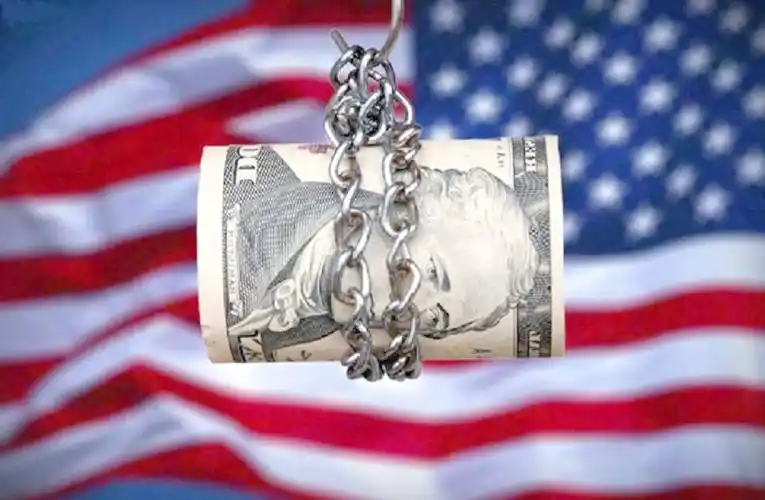Here are the key points and potential impacts regarding this event:
1️⃣ **Background and Purpose of the Program**
* **Start Date:** Launched in 2019.
* **Objective:** Designed to provide a "sandbox" environment for banking institutions (especially smaller banks that do not meet the global systemically important bank threshold) to collaborate with Federal Reserve regulators to test innovative financial products, services, or processes.
* **Operational Method:** Banks can submit innovative proposals to participate, receiving feedback and guidance from the Federal Reserve, aimed at reducing the regulatory uncertainty faced by innovations while allowing regulators to understand emerging technologies.
### 2️⃣ **Reasons for Cancellation (Based on Federal Reserve Statements and Analysis)**
* **Low Participation:** This is **the core reason**. The number of institutions applying for participation after the program was launched was far below expectations (public information shows that only 1 bank ultimately participated).
* **Functional Overlap:** The Federal Reserve believes its **regular regulatory procedures** (such as daily communication, existing approval processes) and **cross-departmental coordination mechanisms** (such as fintech innovation centers in collaboration with other financial regulatory agencies) are sufficiently flexible to meet the innovation needs of banks without maintaining a separately low-utilization pilot program.
* **Resource Optimization:** The Federal Reserve expresses a desire to concentrate regulatory resources on higher priority areas (such as cybersecurity, climate risk, core bank regulation, etc.).
* **Market Changes:** The fintech innovation environment has changed since 2019, and the existing framework may be considered more adaptable.
### 3️⃣ **Key Impact Analysis**
* **Not a Comprehensive Regulatory Relaxation:** What is being eliminated is a **specific pilot program**, not regulation for all fintech innovation activities. Bank innovations still need to comply with existing laws and regulations (such as the Bank Secrecy Act, Fair Lending Act, etc.).
* **Limited Impact on Large Banks:** Large banks typically have dedicated teams to communicate directly with regulators to resolve regulatory issues in innovation, relying less on such pilots.
* **Potential Impact on Community/Regional Banks:**
* **Negative:** Theoretically losing a formal channel to reduce regulatory uncertainty for innovations (even though actual use was limited). Small banks relying on this program may feel disappointed.
* **Positive/Neutral:** The Federal Reserve emphasizes that regular channels are sufficient. If existing communication is effective, the actual impact is minimal. Canceling an inefficient program may allow regulators to focus more on the core needs of community banks.
* **Impact on Fintech Companies:**
* **Indirect Impact:** The program primarily serves licensed banks. Its cancellation may slightly reduce the willingness of bank partners to explore certain innovations (especially those involving regulatory gray areas), but it is not a decisive factor.
* **Alternative Pathways:** Fintech companies more commonly enter the market by collaborating with banks, applying for specific licenses, or utilizing similar programs from other regulatory agencies (such as OCC, state regulators).
* **Regulatory Signal:** Indicates that the Federal Reserve is more inclined to **integrate into the mainstream regulatory framework** rather than establish independent projects, pursuing regulatory **efficiency** and **resource focus**.
### 4️⃣ **Future Outlook**
* **Emphasize Existing Framework:** The Federal Reserve will continue to address innovation through regular regulatory engagement, policy guidance, and cross-departmental collaboration.
* **Focus Areas:** Regulatory resources will be concentrated on emerging areas of greater systemic importance or risk, such as cryptocurrencies (stablecoins), blockchain, AI applications, and modernization of payment systems.
* **Role of Other Regulatory Agencies:** The Office of the Comptroller of the Currency (OCC)'s "Fintech Charter," state regulatory sandboxes, and cross-departmental "Financial Innovation Hubs" will continue to operate.
### 📌 Summary
The Federal Reserve has canceled the innovation regulatory support program, **the core reason being that the pilot project failed to attract enough participants, had low visibility, and was perceived to overlap with the functions of the existing regulatory framework**. This reflects the Federal Reserve's **strategy adjustment to optimize the allocation of regulatory resources and integrate innovation regulation into routine work**, **rather than** an overall "relaxation of regulation" for fintech innovation. Innovations by banks (especially small banks) still need to operate within the existing regulatory framework and primarily communicate with regulators through conventional channels. The development of the fintech ecosystem relies more on the clarity of foundational regulatory policies, actions from other regulatory agencies, and market demand.
**Recommendations to Focus On:** Whether the Federal Reserve will issue clearer regulatory guidelines for fintech (such as blockchain banking services, AI credit models) in the future, which would be more meaningful than an underutilized pilot program. For startups, the OCC's REACH program or state-level regulatory sandboxes may become more viable alternatives.
